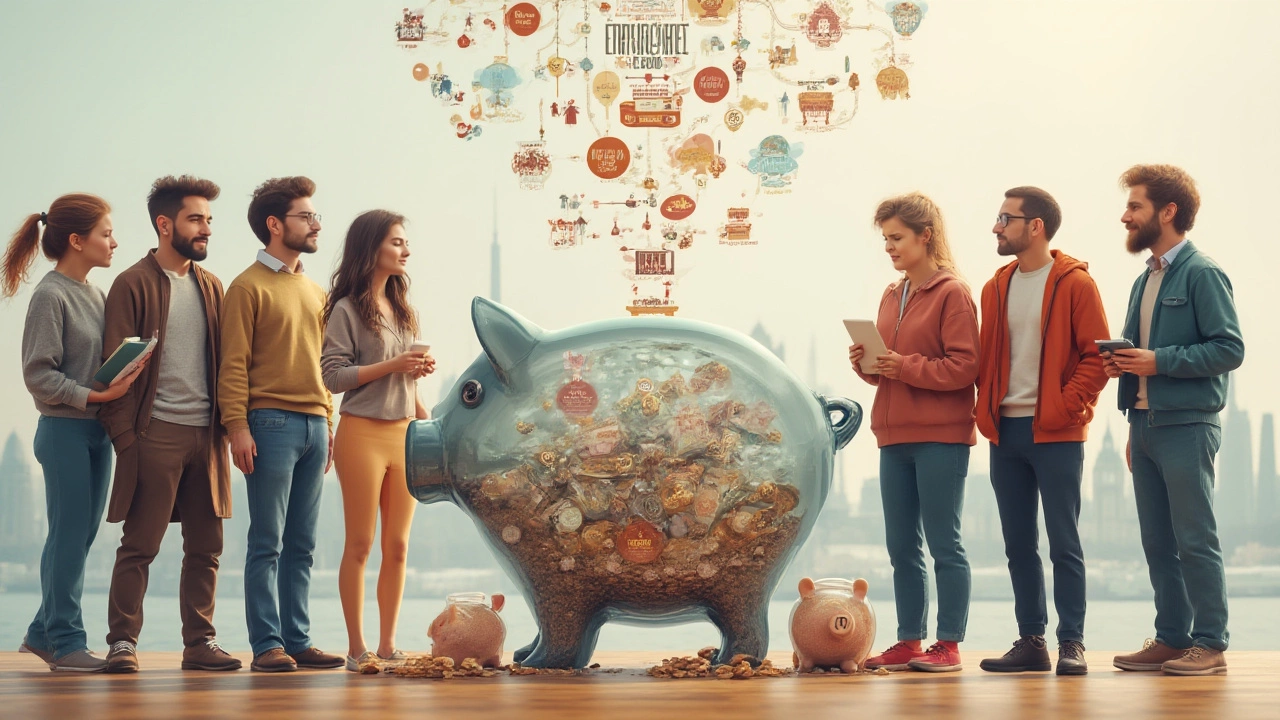US Savings Statistics 2025 – The Real Story Behind the Numbers
Ever wonder why your bank account feels thinner even though you’re not spending more? The answer often lies in national savings trends. In 2025 the personal savings rate in the United States is hovering around 5.2%, down from the pandemic‑high of 13% in 2020. That drop tells a story about wages, inflation, and consumer confidence – and it directly affects what you can afford to save each month.
Why the Savings Rate Matters
The savings rate isn’t just an abstract figure; it’s a barometer for the whole economy. When the rate climbs, households are stashing more cash, which can curb inflation but also slow down spending. When it falls, people are spending more – good for retailers, but it can signal tighter budgets and higher debt levels. For treasury leaders, these shifts shape cash‑flow forecasts, bond demand, and the overall health of the financial system.
Key Drivers Behind the 2025 Data
Three main forces are pulling the US savings rate down this year. First, wages have finally started keeping pace with inflation, giving people more disposable income for everyday expenses. Second, the cost of living – especially housing and energy – is still high, leaving less room for putting money aside. Third, behavioural fatigue from years of pandemic‑era saving has set in; many families are now focused on paying down debt rather than building a cushion.
Another piece of the puzzle is the shift toward high‑interest savings accounts and short‑term CDs. Banks are offering rates near 4.5% APY, which is attracting some of the remaining savers. However, only about 20% of households have moved money into these higher‑yield products, according to the latest Federal Reserve survey.
Geographically, the savings gap is wide. Residents of the Midwest and the South average a 7% personal savings rate, while the West Coast and Northeast linger near 3.5%. The difference often reflects local cost‑of‑living pressures and job market dynamics.
Age also plays a role. Millennials (aged 27‑42) are the most likely to have a savings rate below 4%, squeezed by student loans and housing costs. In contrast, Baby Boomers are averaging a 9% rate, as many are preparing for retirement and have more stable incomes.
What does all this mean for you? If you’re trying to boost your own savings, the data suggests two practical moves: lock in a high‑yield account to beat inflation, and trim discretionary spending that’s not essential. Even a small increase – say 1% of your monthly income – can add up quickly thanks to compound interest.
For businesses, the declining savings rate could signal stronger consumer demand, but also a potential rise in credit‑risk as households juggle debt payments. Treasury managers should keep an eye on these trends when planning liquidity buffers or adjusting investment strategies.
Bottom line: US savings statistics in 2025 paint a picture of cautious optimism mixed with lingering financial pressure. Understanding the numbers helps you make smarter personal choices and lets finance professionals anticipate market shifts before they happen.

Get the real numbers on how many Americans have $200k in savings, why the gap exists, and what it means for financial security today, plus realistic tips for building up your own nest egg.
Read More